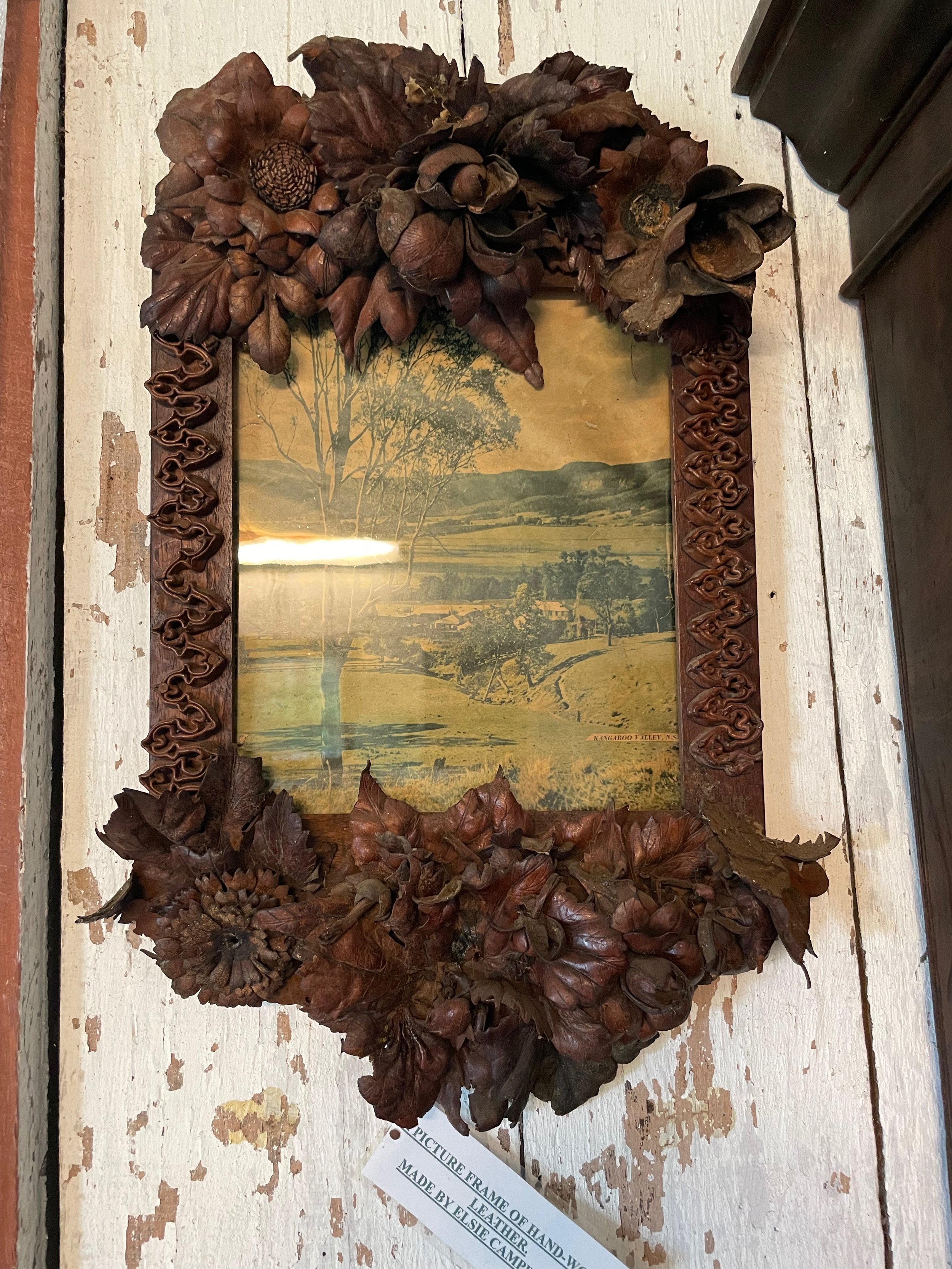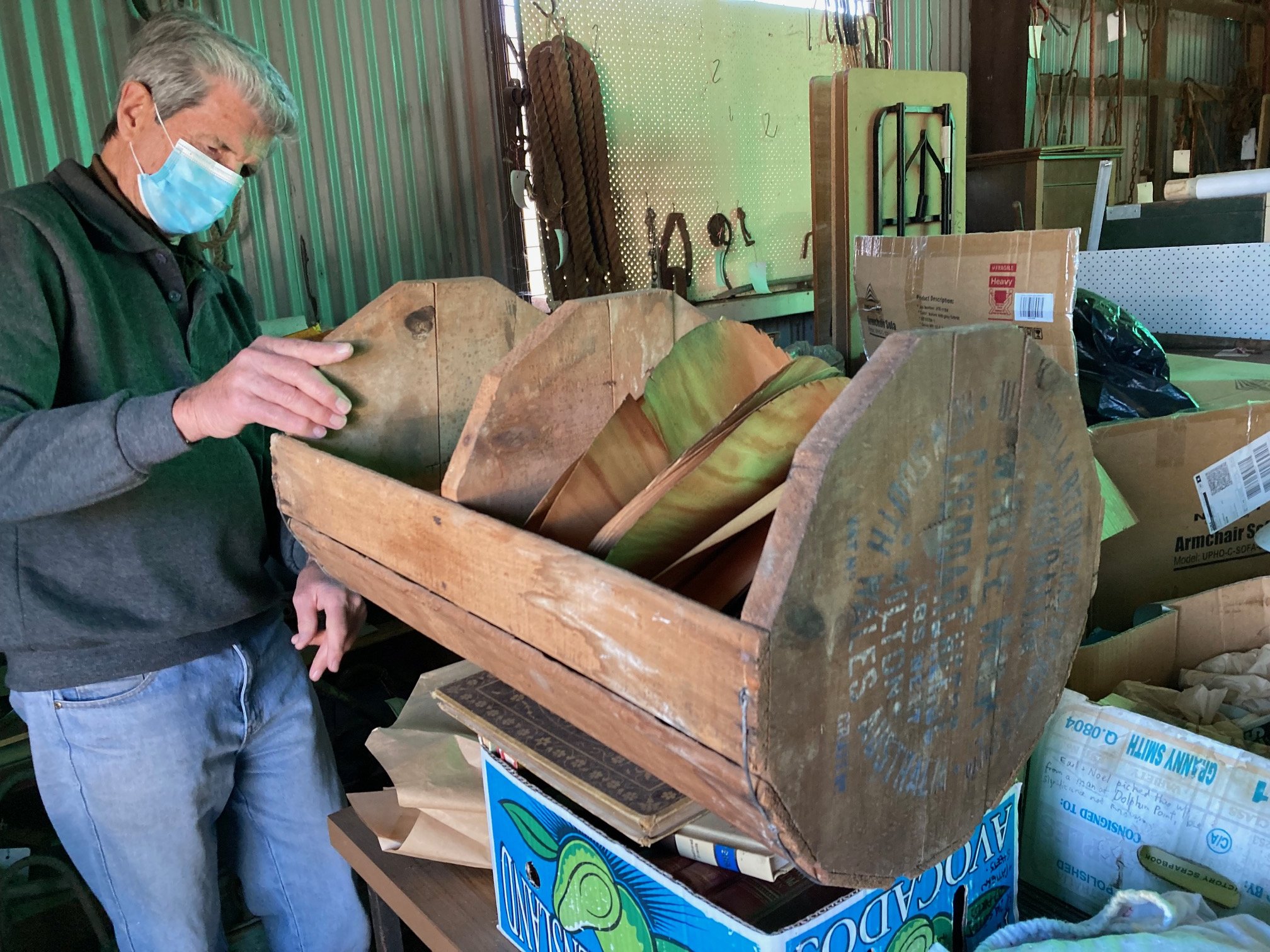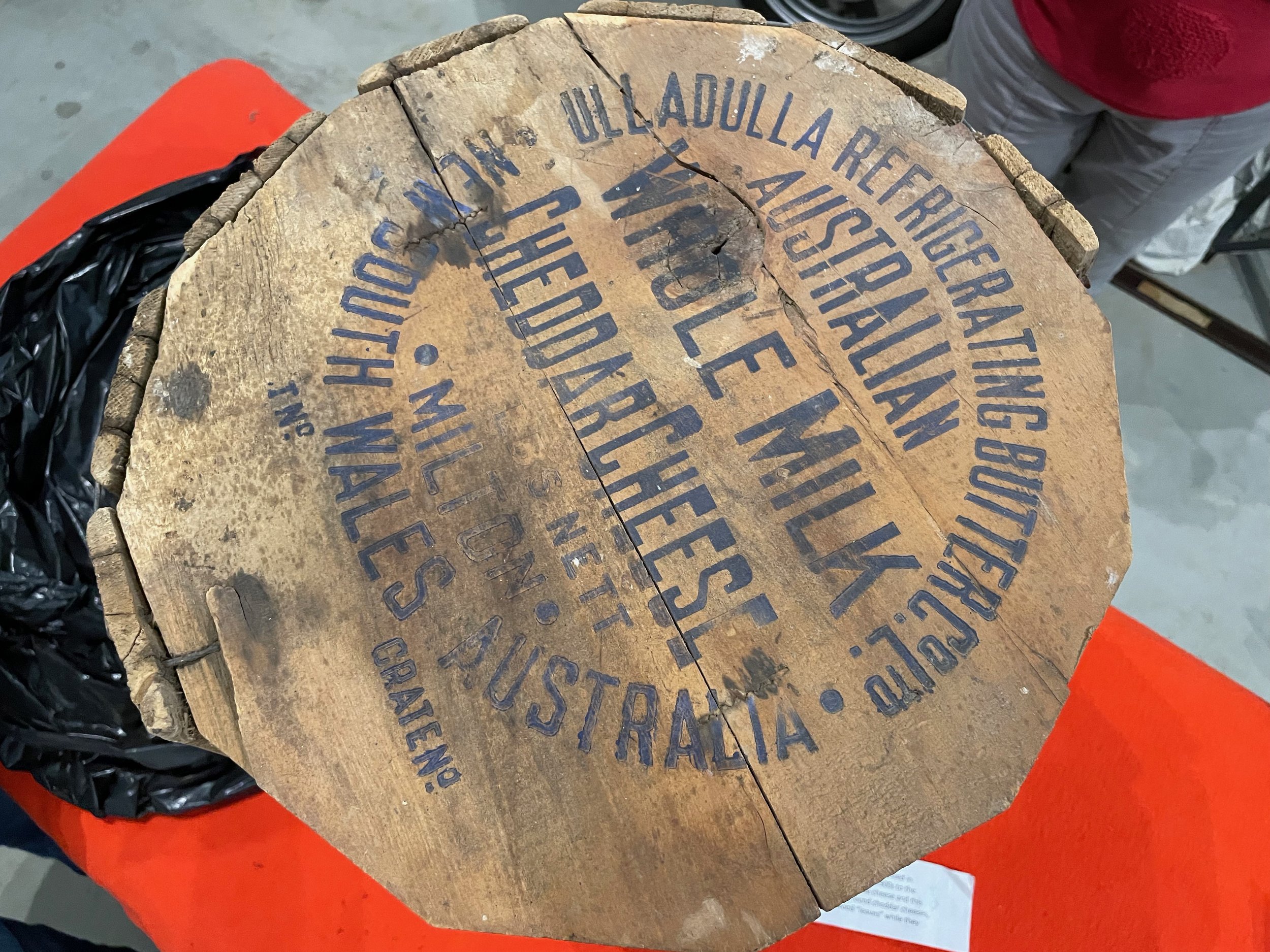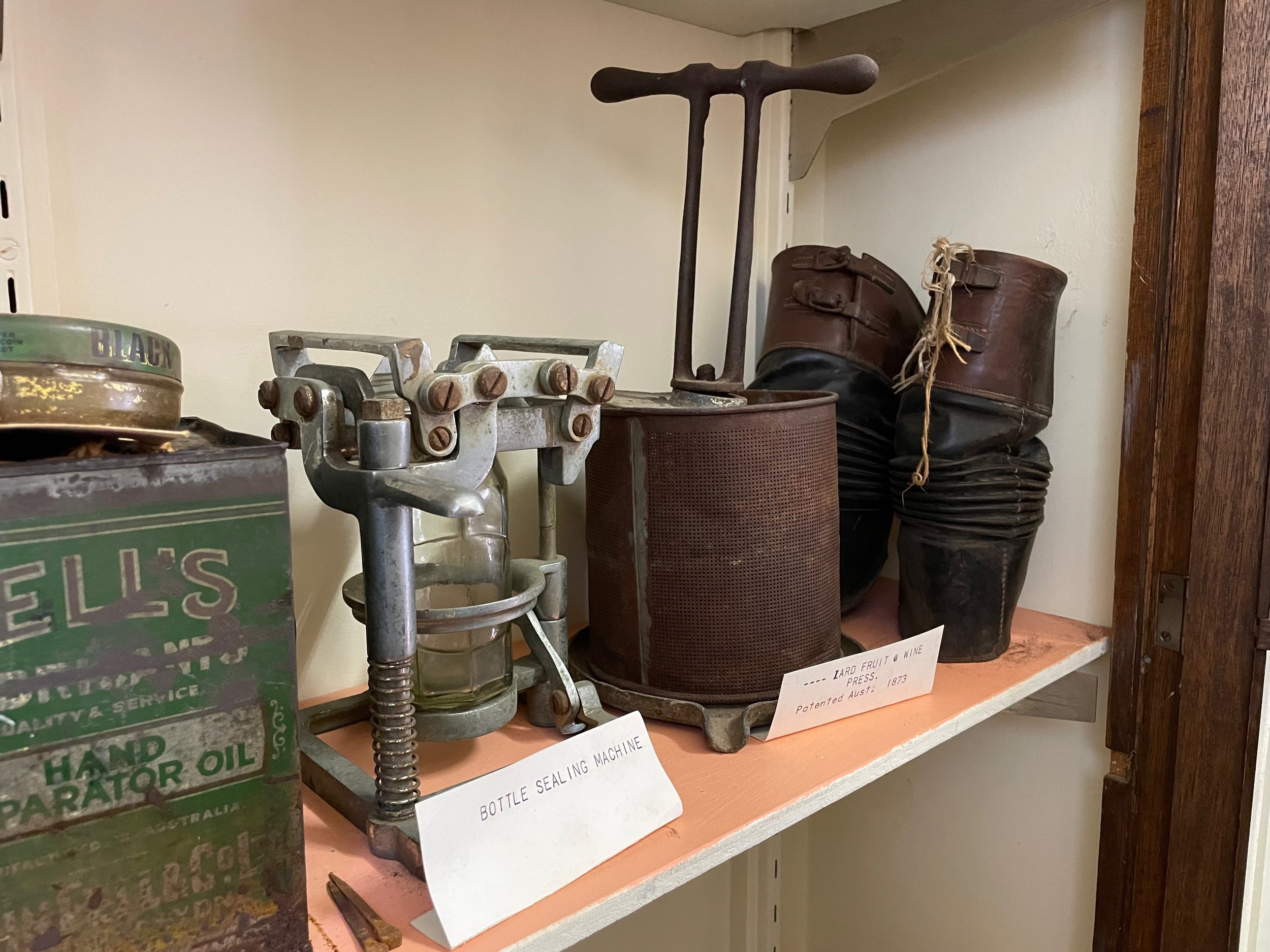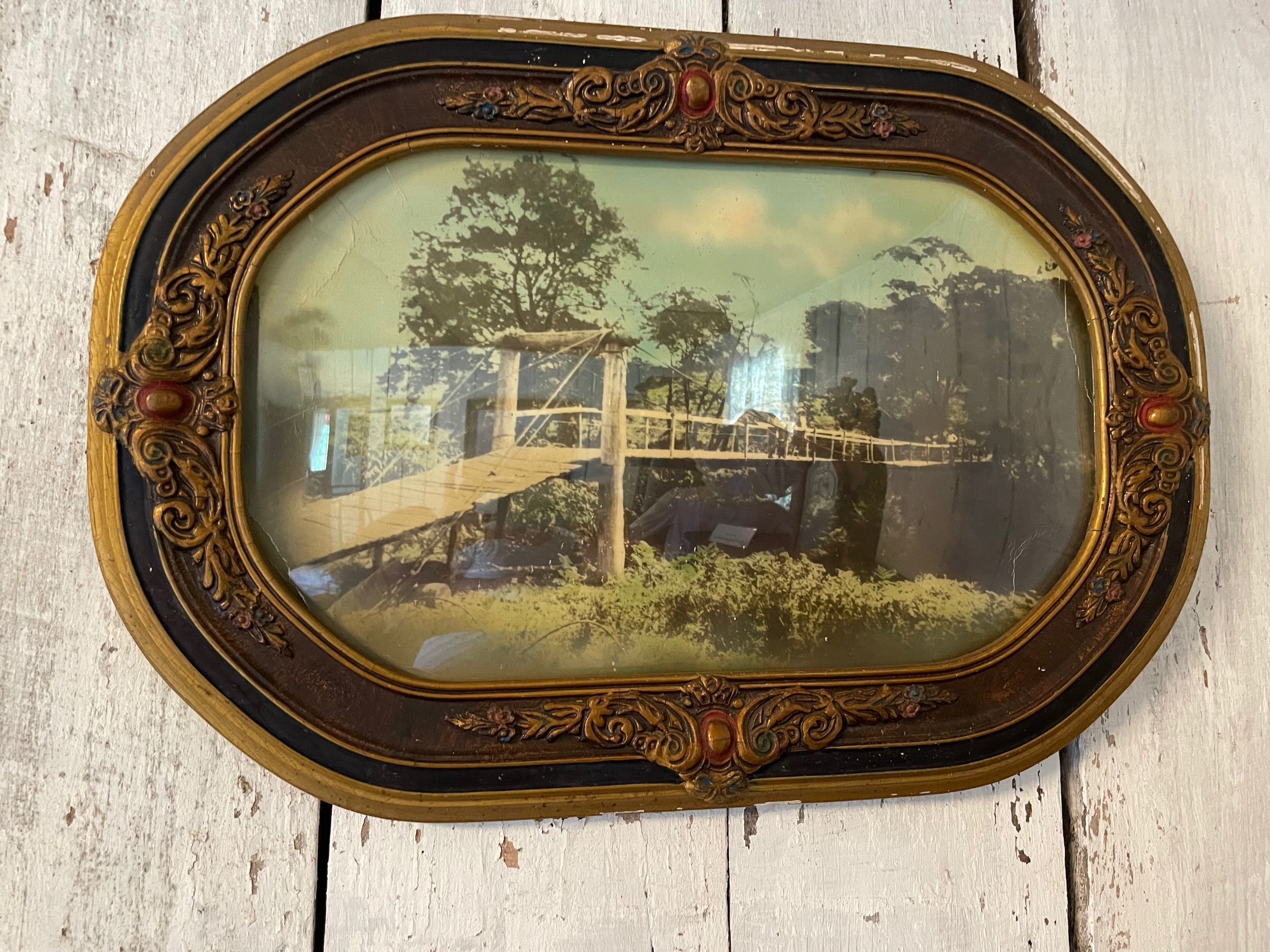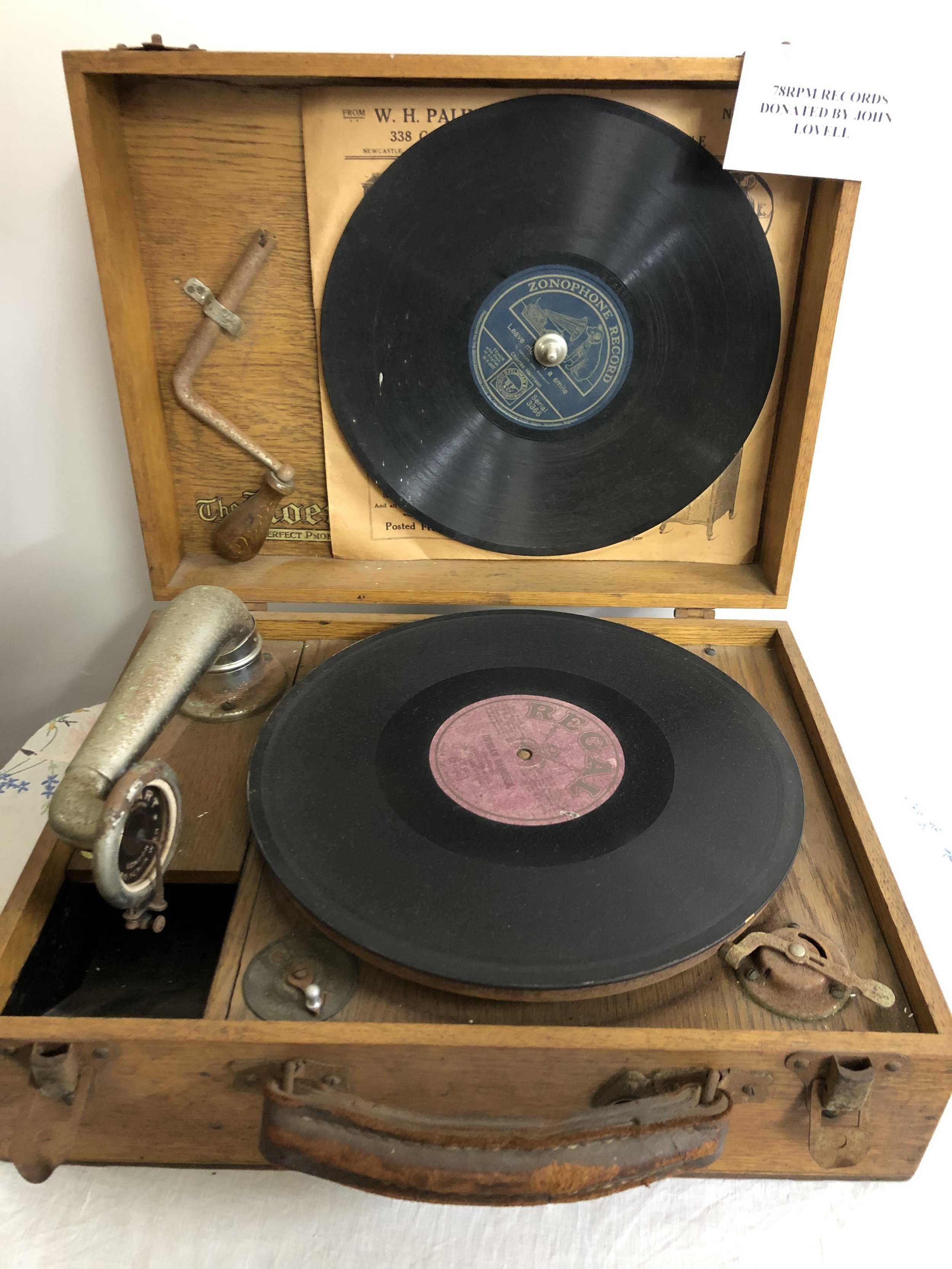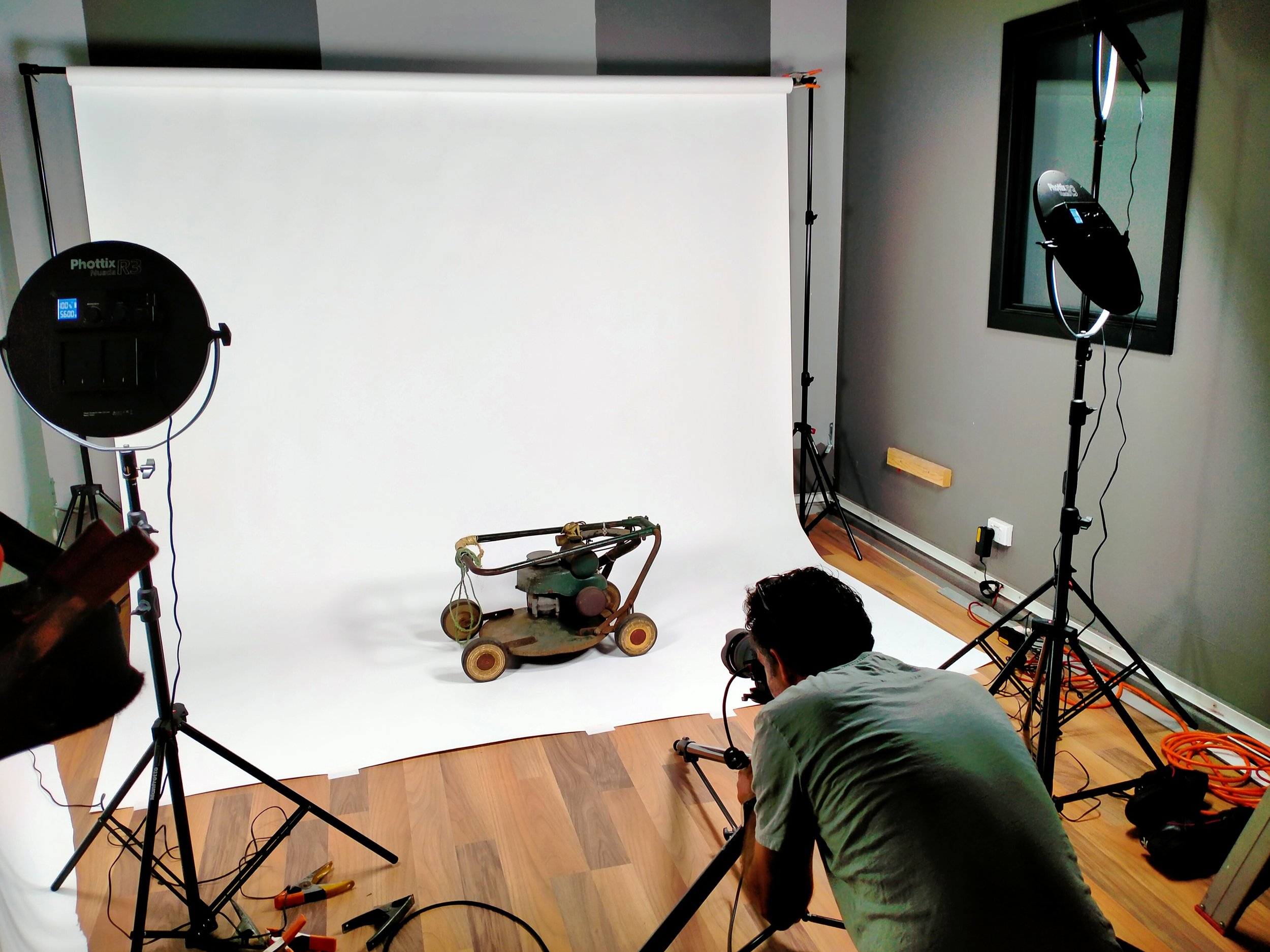Digitising Collections from the Shoalhaven.
Photographer Nick Bower capturing a leather frame from Kangaroo Valley.
I have been fortunate to work with the Shoalhaven City Council on the “Digital Buzz” Project since 2021. The Shoalhaven City Council were successful in a Create NSW grant to embark upon the digitisation project that connects to Storyplace.
My role was to engage with 4 collecting organisations across the Shoalhaven region and develop each Museum’s capacity in selecting, preparing and creating online digital stories. The museums that I worked with on this project were -
Milton Ulladulla Historical Society,
Berry Museum,
Lake Tabourie Museum, and
Kangaroo Valley Historical Society Museum .
The museums are all volunteer run with each team of dedicated volunteers ranging from only 2 to more than 10. Each Museum and team is unique as are the collections that they hold. The project encouraged deeper engagement and understanding of their collection, while developing new skills and sharing experiences along the way.
The project began during Sydney’s tight lockdowns and therefore my first meetings with the volunteers from each Museum was over Zoom. This was still a novel way to interact and we were able to begin to develop a rapport through this technology and many meetings were held across this platform. Therefore, when the lockdowns were lifted and site visits were possible we felt like we were old friends.
The key elements of my involvement with this project were understanding the collection, building the capacity of the volunteers, and providing clear guidelines for the future.
I collaborated with each team to select 50 objects that would showcase their collection and tell the stories of their community. I encouraged the volunteers to select objects across material types, sizes and condition to ensure that various scenarios, questions and concerns were raised during the process. These first 50 objects were only a starting point for the museum, with ambitions of the entire collection working through the process into the future.
It was important to discuss the selection, the objects and the stories behind these objects. How did they come to be a part of the Museum? What is provenance? Who has ownership and copyright? Some objects were clearly “hero” objects for the Museum with strong provenance and ties to the community, others required more research and discoveries to be made.
I led the volunteers through critical decision making components of the project, including copyright, moral rights, ownership, condition of the object, the importance of the history and provenance. Plus provided hands-on training in handling, cleaning, labelling and packaging for transport.
It was exciting to see the objects that were selected from each Museum. The stories and histories behind these objects were shared and researched over the course of the project.
The volunteers’ research provided the foundations for the storytellers from Storyplace to develop and expanded upon, plus the all important data for the catalogue entries.
It was interesting to see the links between the museums, the objects that they hold and the shared histories of the region. Dairy farming, timber cutting, the sinking of the Walter Hood, and the development of the townships. Plus the diversity of the stories from individual iconic characters of the townships, local pioneers and the innovation in the area.
Two other consultants and the Museum Advisor for the area also worked with the Museums on the project. Shoalhaven Council engaged an external photographer that captured the 50 chosen objects and trained the volunteers in photographic essentials to continue to photograph objects from their collection. In addition, a catalogue expert with specific knowledge on e-Hive was engaged to train the volunteers on cataloguing protocols and e-Hive. The Museum Advisor was instrumental in providing consistent support throughout the whole project and beyond.
My final role was the development of a workflow document for each Museum that outlined the project steps. This provided the stages from initial selection, research, and photography through to publishing on e-Hive and/or alternate websites. This workflow enables each Museum to continue to capture their collection and share their stories with the wider community.
Please check out each of the Museums websites.



